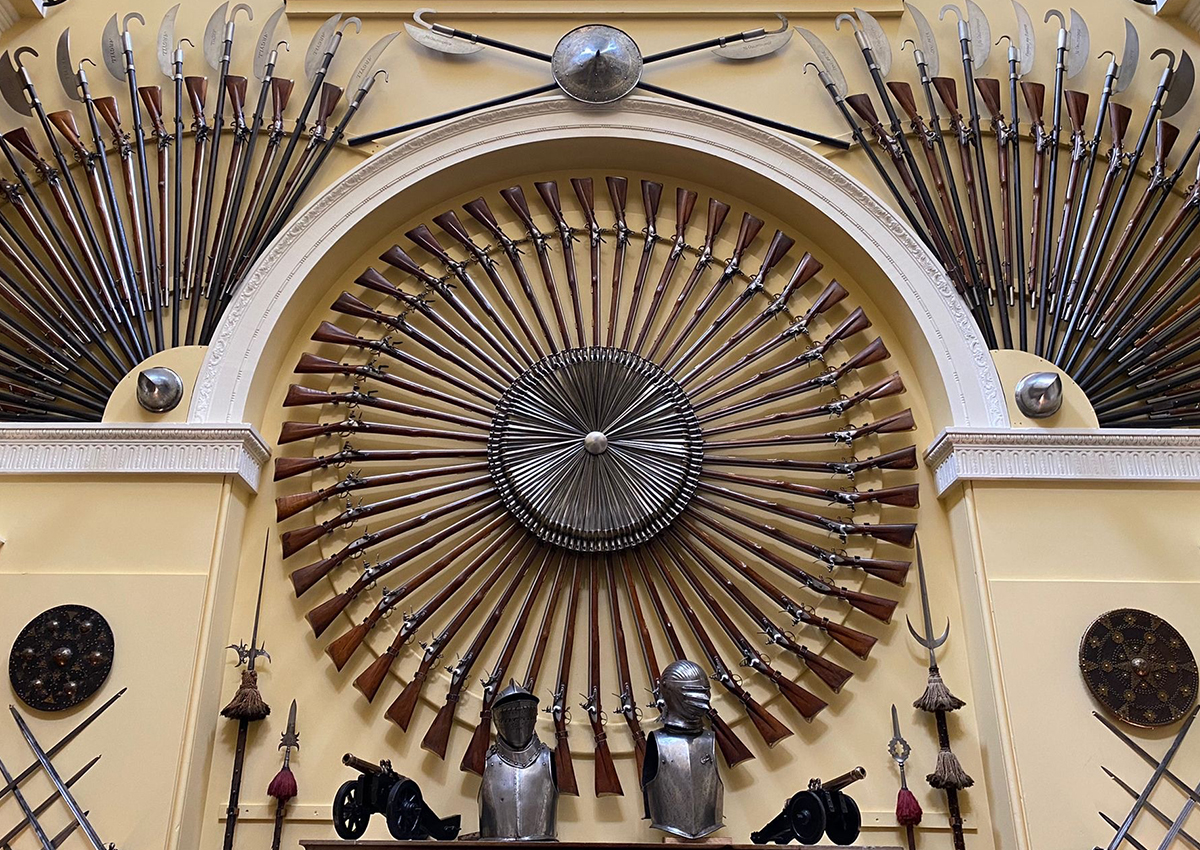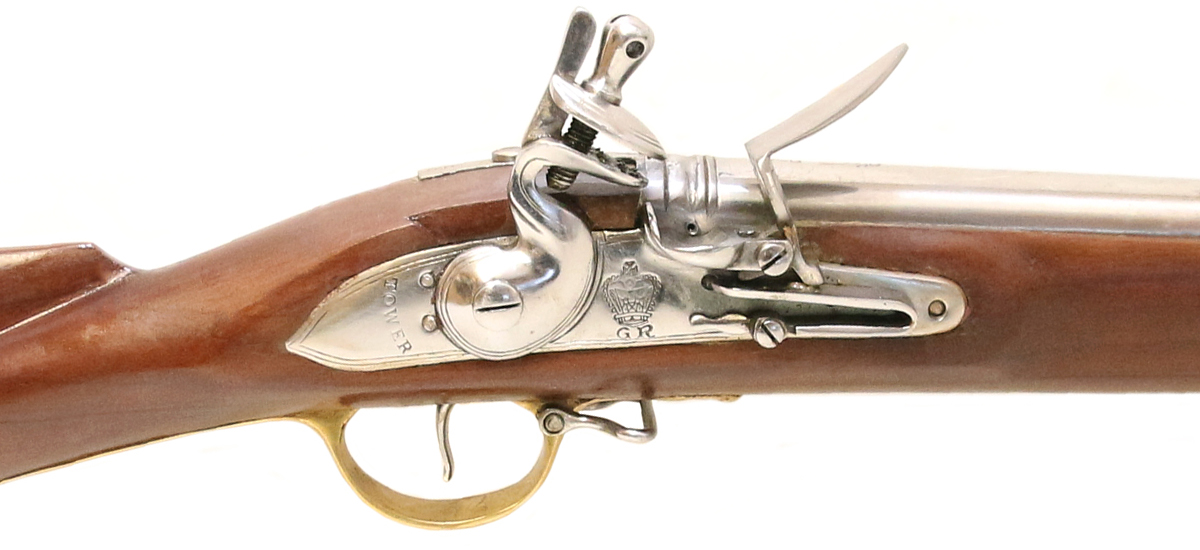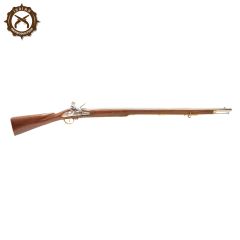We use cookies to make your experience better. To comply with the new e-Privacy directive, we need to ask for your consent to set the cookies. Learn more
Shooting With A Repro Indian Brown Bess
In this article, shooter Tom Metcalf-Jackson takes us through the history of the Brown Bess muzzleloader and the specifications and design of the modern day reproduction muzzleloaders. He puts a reproduction Indian Brown Bess through its paces in the field and gives us an overall verdict of its performance.
Preliminary history of the Brown Bess
Much has already been written on the Brown Bess, however, for the unfamiliar reader, I shall summarise. The British Army was, in the early 18th century, a relatively new body, having started life some 37 years prior after the Restoration of 1685. The need for standardisation, and to replace the now somewhat ageing standard issue doglock musket, led to the adoption of the Long Land Pattern, swiftly nicknamed the Brown Bess, in 1722. It would, over the years, undergo changes and new patterns, but remain at its core, the same weapon until it was finally retired by the Royal Navy in 1854.
After leaving service, the Brown Bess was either converted to percussion, sold off to countless nations and armies throughout the world, or used as a sporting gun. A service life of 132 years makes it the longest serving weapon of the British Army, and most likely, the longest serving long arm of all time.
The Brown Bess under test today is the India Pattern, adopted in 1797, seeing service throughout the Napoleonic Wars, American War of Revolution, War of 1812, and countless others. This model is a reproduction manufactured in India and proofed in Birmingham.
- Click to view the Indian Brown Bess muzzleloader with more product details, pricing and delivery information.

A Display of Brown Bess Muskets at Inveraray Castle, Scotland
Specifications and Design of the Reproduction Brown Bess
The gun is 55 long overall (6ft with bayonet), with a 39 smoothbore barrel of .75 calibre, and weighing around 10lbs unloaded. The full stock and fore end, finishing with a brass collar around 4 from the muzzle, makes it a heavy, but surprisingly easy to handle gun.
Whilst not what one might describe as a pretty gun, it is easy to forget the Brown Bess was designed as a military tool, with the brass ramrod pipes and trigger guard being both attractive, and a historical solution to corrosion on exposed metal. Like every part of the gun, these brass parts are robustly designed for hard use, and the Brown Bess's length of service is testament to its sturdy construction.
Side by side with an original, it is clear the Indian reproduction is a faithful copy. The brass is cast, rather than machined, giving the gun a hand-made feel, consistent with the original method of manufacture. One of the innovations of the Brown Bess is its standardisation, which has been carried through to the modern day.
The lock functions identically to the original, and I was even able to exchange the mainspring between the reproduction and original with no bother. The springs are exceptionally made, and the lock interior bears the hallmarks of hand fitted parts. The flintlock mechanism is not the most reliable in the world (but then you'll struggle to find one superior to percussion or self-contained cartridge guns), but nevertheless, the pan holds a good quantity of powder, and the frizzen is large and robust enough to consistently generate a good spark.
Quality of the Indian Brown Bess Muzzleloader
I feel at this point some attention should be given to the quality of the Indian reproduction in relation to the Italian offerings. Much has been written online, mainly from American sources, as to the quality of Indian guns. Guns sold in America are not subject to proofing laws, and it can take only one failure out of ten thousand to ruin the reputation of a gun.
Conversely, all guns sold in the UK must be proofed, so any guns that may be of sub-par quality are weeded out long before they get to market. In any instance, I have handled innumerable reproduction Brown Besses and other guns of Indian manufacture, and can only recall one in my experience that failed.
Comparing an Indian reproduction Brown Bess with a Pedersoli, the difference is immediately obvious. The Pedersoli is made on CNC machines, and the precision with which the parts are made is therefore correspondingly better. This is not to say the Indian guns are any worse for this, they are, in my opinion, a more faithful reproduction of the original gun, that is entirely fit for either shooting, re-enactment or display (when inert).
It may also sway the minds of some readers that may be on the fence to know that the Indian reproduction Brown Bess retails at £472, compared to the Pedersoli at £1302.
In the Field With the Indian Brown Bess Muzzleloader
Being a military gun, it is designed simply, and the loading and operation is no less simple. In ideal weather conditions (somewhat of a novelty when shooting in Yorkshire), the Brown Bess is a pleasure to shoot. Even in bad weather, loading is simple. The pan is large enough to accommodate a big enough priming charge to ensure ignition, and the lock and trigger is easy to manipulate with gloved hands, or in the damp.
I chose a rather overcast morning to test. Complete with a flask full of powder, patches, balls, and a spare flint, I had everything required to start shooting. Given the large .75 bore (though the actual bore diameter can vary on Indian guns), loading is easy, even without a funnel, though for consistency's sake, I really would recommend one. Using a stout load of Henry Krank Medium Powder (primed with fine) and a patched .732 ball, I had little trouble getting a few shots off to much fanfare and with a very satisfying cloud of smoke.
Shooting off a bench at first, at 50 yards, the accuracy was pretty much what you expect of a large calibre musket. The gun will consistently hit a musket target at this distance, and I feel the couple of shots (out of 10 rested) I shot that failed to hit the target were down to my own inconsistencies in loading, rather than the gun.
Some readers may decry me for using a dry patch, rather than an oiled. I chose a dry as to better gauge the level of fouling, a problem which did not become majorly apparent over the 25 shots I fired. I can imagine that firing consistently, at the Army standard of 3 rounds a minute, the barrel would quickly heat and the fouling become a real problem, but this is no longer a real world issue.
One soldier during the Peninsular War, at the battle of Fuentes de Onoro in 1811, recorded firing 107 cartridges over the course of the day's battle. The average shooter will not find loading problematic due to fouling accumulation over the course of a couple hours relaxed shooting.
Offhand shooting was more of a challenge. Weighing just shy of 10lbs, with an extra 1lb of bayonet (plus a few grams for powder, flint and shot), this is not an inconsiderable gun to wield. For a shooter standing 5'10, the gun and bayonet is longer than I am. Whilst the gun is understandably somewhat muzzle heavy, this is not really a problem, but I had a hard time consistently hitting the target, managing only 3 shots on the paper out of 10, without the bayonet attached.
Shooting Clays
As the Brown Bess is, strictly speaking, a shotgun, I could not help myself but grab some shot and wads, and try my luck at clays. I am an acceptable, but by no means stellar clay shooter, and whilst I am experienced with muzzle loading guns, I really struggled with the Brown Bess.
Using a square load right for an 11 bore, the Brown Bess threw the shot out with authority, though I was frequently either behind or in front of the target. The trigger pull, at a hefty 16lbs, means conscious effort is required. This, with the natural delay of ignition of a flintlock means there are more variables for the shooter to be aware of and control than with more modern guns, and accuracy suffers accordingly. Out of 10 clays, I managed 2 hits with the Brown Bess.
Overall Verdict
The Indian reproduction Brown Bess offers exceptional fun for the price. It has its shortcomings, but I feel they are nothing other than what one would experience with any Brown Bess. The fit and finish on the Indian guns is not equal to a Pedersoli, but at a third the price, I can find that very easy to forgive.
On targets, the Indian Brown Bess performs well with the right size ball and charge. It isn't a precision tool, and you are unlikely to be winning many competitions with it, but I imagine if you are considering buying a Brown Bess of any description, you have already made your peace with this.
Clays are a challenge, and you'll have to be a much more skilled shooter than I am to win. That said, the Indian Brown Bess is great fun and a pleasure to shoot, and you will struggle to find a gun for £472 that will give you as much joy.
- Click to view the Indian Brown Bess muzzleloader with more product details, pricing and delivery information.
Further Information About the Indian Brown Bess
You can view details on this reproduction muzzleloader online by following this link to the Henry Krank collection of Indian Brown Bess.
Shop for other useful items that were featured in this article:
- Click to view the Indian Brown Bess muzzleloader with more product details, pricing and delivery information.


